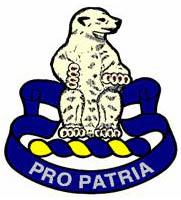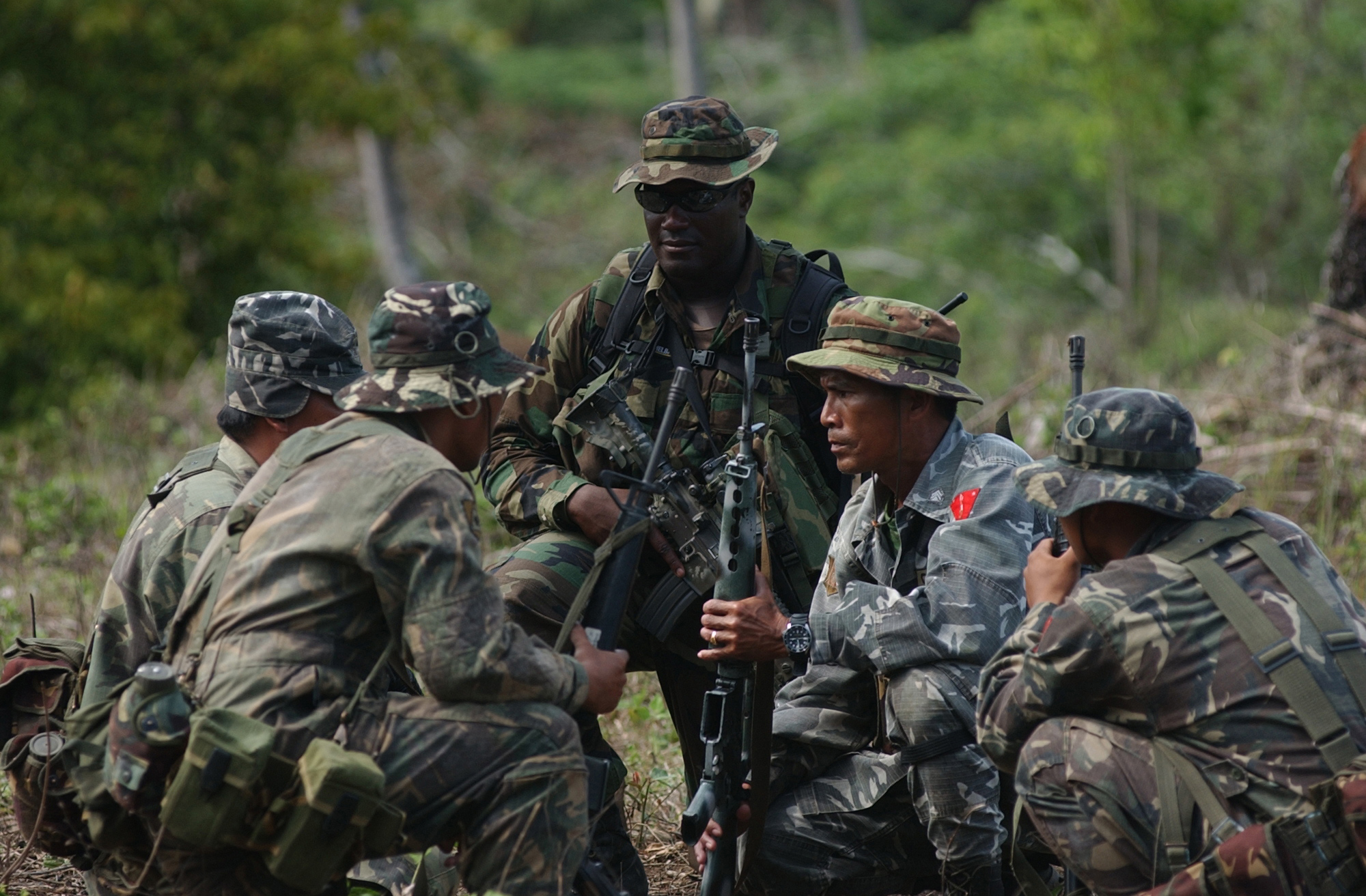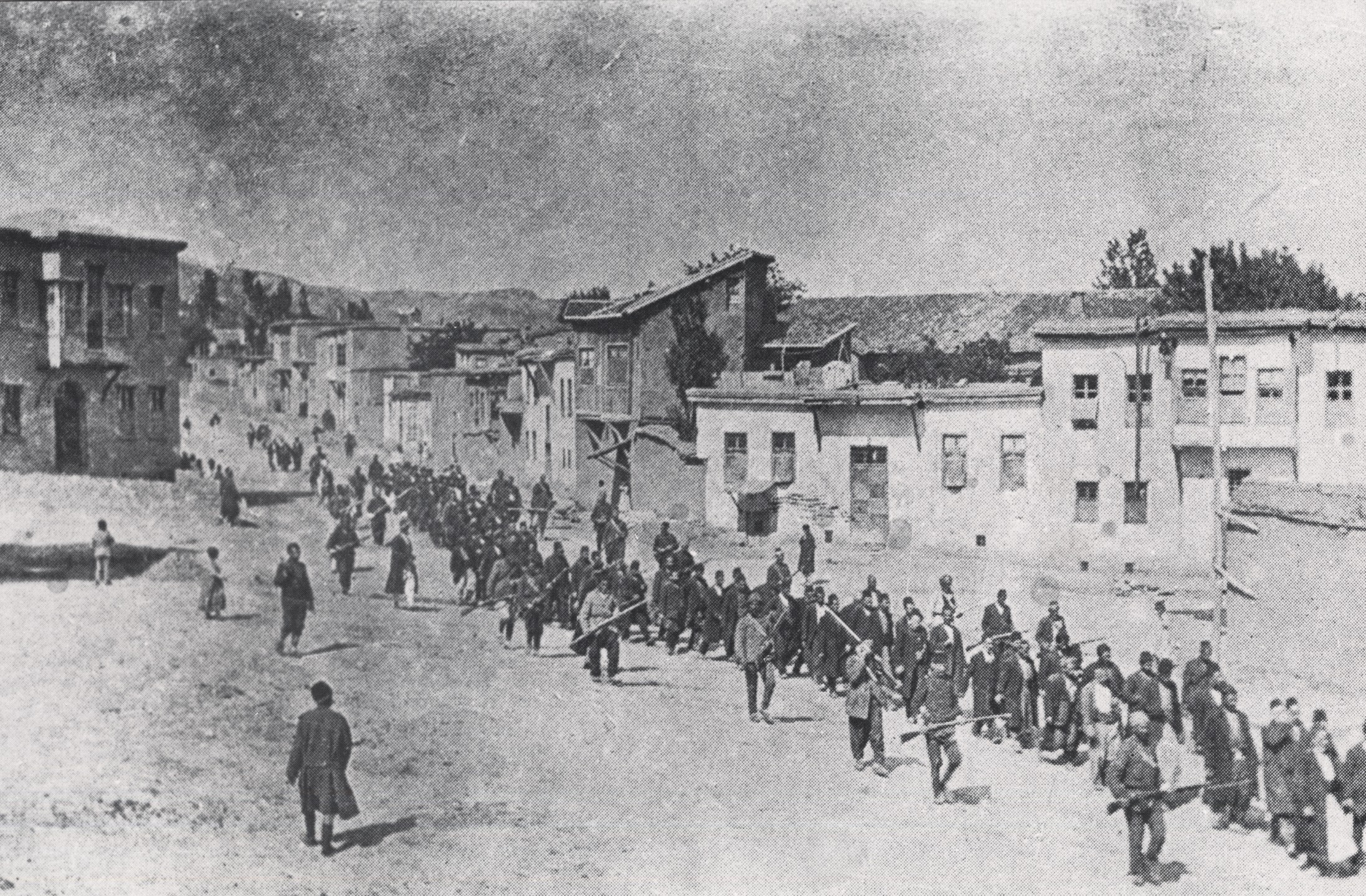|
North Luzon Force
The North Luzon Force was a corps-sized grouping of the U.S.-sponsored Philippine Army, defeated in battle against the Japanese in 1941–42. On November 4, 1941, United States Army Forces Far East (USAFFE) announced the creation of new commands to organize, train, and equip Philippine Army forces and US Philippine Department forces. The new commands are North Luzon Force (NLF), South Luzon Force (SLF), Visayan-Mindanao Force (VMF), and Harbor Defenses of Manila and Subic Bays under BGen. George F. Moore. Initially BGen. Edward P. King Jr was selected as commander established his headquarters in Fort Stoltenberg in Angeles, Pampanga. However, as war was looming MGen. Jonathan Wainwright IV, replaced General King to command and he was given 11th Infantry Division under Col. (Later BGen) William Brougher, USA, 21st Infantry Division under BGen. Mateo Capinpin a native filipino army officer, 31st Infantry Division under Col (Later BGen.) Clifford Bluemel, and 71st Infantry Division ... [...More Info...] [...Related Items...] OR: [Wikipedia] [Google] [Baidu] |
Philippines Campaign (1941–1942)
The Philippines campaign ( fil, Kampanya sa Pilipinas, es, Campaña en las Filipinas del Ejercito Japonés, ja, フィリピンの戦い, Firipin no Tatakai), also known as the Battle of the Philippines ( fil, Labanan sa Pilipinas) or the Fall of the Philippines, was from December 8, 1941, to May 8, 1942, the invasion of the Philippines by the Empire of Japan and the defense of the islands by United States and the Philippine Armies during World War II. The Japanese launched the invasion by sea from Formosa, over north of the Philippines. The defending forces outnumbered the Japanese by a ratio of 3:2 but were a mixed force of non-combat-experienced regular, national guard, constabulary and newly created Commonwealth units. The Japanese used first-line troops at the outset of the campaign, and by concentrating their forces, they swiftly overran most of Luzon during the first month. The Japanese high command, believing that they had won the campaign, made a strategic decision ... [...More Info...] [...Related Items...] OR: [Wikipedia] [Google] [Baidu] |
Pozorrubio
Pozorrubio, officially the Municipality of Pozorrubio ( pag, Baley na Pozorrubio; Ilocano: ''Ili ti Pozorrubio;'' tgl, Bayan ng Pozorrubio), is a 1st class municipality in the province of Pangasinan, Philippines. According to the 2020 census, it has a population of 74,729 people. Often, the town's name is written as "Pozzorubio", but the correct spelling is "Pozorrubio". Its land area is 8,965 hectares. Pozorrubio is from Manila and is from the provincial capital, Lingayen. History Pozorrubio began as Claris, a hamlet and later barrio of San Jacinto, Pangasinan. It was named in honour of Juan de la Cruz Palaris, leader of the 1762 Palaris Revolt in Binalatongan (today San Carlos City). Wealthy landowners ''Don'' Benito Magno, Domingo Aldana, Pedro Itliong, Bartolomé Naniong, Bernardo Olarte, Pedro Salcedo, Juan Ancheta, Antonio Sabolboro, José Songcuan, Tobías Paragas, Francisco Callao, and Baltazar Casiano y Salazar filed a petition on June 19, 1868, with Governo ... [...More Info...] [...Related Items...] OR: [Wikipedia] [Google] [Baidu] |
United States Army Forces In The Far East
United States Army Forces in the Far East (USAFFE) (Filipino language, Filipino: ''Hukbong Katihan ng Estados Unidos sa Malayong Silangan/HKEUMS''; Spanish language, Spanish: ''Fuerzas del Ejército de los Estados Unidos en el Lejano Oriente'') was a military formation of the United States Army active from 1941 to 1946. The new command's headquarters was created on 26 July 1941, at No. 1, Calle Victoria, Manila, Luzon, the Philippines, with General Douglas MacArthur as commander. The Chief of Staff was Brigadier General Richard K. Sutherland and the Deputy Chief of Staff was Lieutenant Colonel Richard J. Marshall. The core of this command (including MacArthur, Marshall, and Sutherland) was drawn from the Office of the Military Advisor to the Commonwealth Government of the Philippines. Creation of this command led to the subordination of the headquarters of the Philippine Department of the U.S. Army, as a service command, since planning and tactical control were now under USAFFE c ... [...More Info...] [...Related Items...] OR: [Wikipedia] [Google] [Baidu] |
History Of The Philippine Army
The Philippine Army was established on December 21, 1935, as the Army of the Philippines, with a general headquarters in Manila, and units and formations based throughout the provinces of the Philippines. The Philippine Army was initially organized under the National Defense Act of 1935 (Commonwealth Act No. 1) that formally created the Armed Forces of the Philippines. Certain components of the Armed Forces of the Philippines were under the control of the United States Army Forces in the Far East (USAFFE) from 1941 to 1946, after the entry of the U.S. into World War II. Origin Before the establishment of the Commonwealth Government in 1935, no effort was made for self-defense by Philippine forces since the United States assumed responsibility for the defense of the islands. An immediate concern of the commonwealth government was the defense of an emerging nation. President-elect Manuel L. Quezon convinced his friend, General Douglas MacArthur ( Chief of Staff of the U.S ... [...More Info...] [...Related Items...] OR: [Wikipedia] [Google] [Baidu] |
31st Infantry Regiment (United States)
The 31st Infantry Regiment ("Polar Bears") of the United States Army was formed on 13 August 1916, and was part of USAFFE's Philippine Division during World War II. The unit is rare in that it was formed and has spent most of its life on non-American soil. The regiment is the third to bear the designation; the first was formed for the War of 1812 and disbanded in 1815. The second was created from the 3rd Battalion of the 13th Infantry on 28 July 1866, in the reorganization of the U.S. Army following the American Civil War. The second organization to be called the 31st Infantry was consolidated with its sister regiment the 22nd Infantry (also formed out of the 13th) in an 1869 reorganization. Because the lineage of the previous regiments called the 31st were passed down to their successor units, the current 31st Infantry Regiment does not share their history or honors. Organization The third organization called the 31st Infantry Regiment was formed at Fort William McKinley, ... [...More Info...] [...Related Items...] OR: [Wikipedia] [Google] [Baidu] |
26th Cavalry Regiment (Philippine Scouts)
The 26th Cavalry Regiment (Philippine Scouts) (26th CAV (PS)) was part of U.S. Army Forces Far East's Philippine Department, during World War II. The 26th engaged in the last cavalry charge in the history of the U.S. cavalry. The American Battle Monuments Commission list 301 dead who were members of this regiment interred at Manila American Cemetery and Memorial. Formation The 26th Cavalry was formed in 1922, at Fort Stotsenburg, from elements of the 25th Field Artillery Regiment and the 43d Infantry Regiment (PS). The regiment was based there, with the exception of Troop F (which was based at Nichols Field). In addition to horse mounted troops, the regiment had a HQ Troop, machine gun troop, and a platoon of six Indiana White M1 scout cars, and trucks for transporting service elements. On 30 November 1941, the regiment had 787 enlisted men and 55 officers, and its commander was Col. (later BGen.) Clinton A. Pierce (USA). World War II combat history Northern and central L ... [...More Info...] [...Related Items...] OR: [Wikipedia] [Google] [Baidu] |
71st Division (Philippines)
The 71st Infantry Division was a division of the Philippine Army under the United States Army Forces in the Far East (USAFFE). Organization History It was active from 1941 to April 9, 1942, whereupon it surrendered when Bataan fell. Previously it was active in Southern Luzon. Col. (later BGen.) Clyde A. Selleck (USA) was the division's commander, until around January 1942, when Col. (later BGen.) Clinton A. Pierce (USA) took command. Pierce had been in command of the U.S. 26th Cavalry Regiment, 26th Cavalry Regt. (PS) since before the Japanese opened hostilities. Combat Narrative After the Japanese invasion of the Philippines in December 1941, it formed part of South Luzon Force (activated December 13, 1941) under BGen. George M. Parker (general), George M. Parker Jr., HQ Fort Bonifacio, Ft. McKinley, Manila. The South Luzon Force controlled a zone east and south of Manila. Parker initially had the PA 1st, 41st, 51st, and 71st Infantry Divisions, and the 2nd Provisional ... [...More Info...] [...Related Items...] OR: [Wikipedia] [Google] [Baidu] |
31st Division (Philippines)
The 31st Infantry Division was a division of the Philippine Army under the United States Army Forces in the Far East (USAFFE). Organization History It was active from November 18, 1941 to April 9, 1942, whereupon it surrendered when Bataan fell. It was organized and trained in Zambales Province of Northern Luzon. Col. (later BGen.) Clifford Bluemel (USA) was the division's commander. Col. Pastor C. Martelino (PA), a 1920 U.S. Military Academy graduate, was his chief of staff. Combat Narrative At the opening of hostilities, 8 December 1941, the 31st Division formed a part of BGen. (later LGen.) Jonathan M. Wainwright's North Luzon Force of the Philippine Army (later renamed I Philippine Corps), alongside the 11th and 21st Divisions, and the 26th Cavalry Regiment. The 31st was initially headquartered at San Mateo, Rizal, but most of its personnel were training at San Marcelino, Zambales San Marcelino, officially the Municipality of San Marcelino ( ilo, Ili ti San ... [...More Info...] [...Related Items...] OR: [Wikipedia] [Google] [Baidu] |
Tarlac
Tarlac, officially the Province of Tarlac ( pam, Lalawigan ning Tarlac; pag, Luyag/Probinsia na Tarlac; ilo, Probinsia ti Tarlac; tgl, Lalawigan ng Tarlac; ), is a landlocked province in the Philippines located in the Central Luzon region. Its capital is the city of Tarlac. It is bounded on the north by the province of Pangasinan, Nueva Ecija on the east, Zambales on the west and Pampanga in the south. The province comprises three congressional districts and is subdivided into 17 municipalities and one city, Tarlac City, which is the provincial capital. The province is situated in the heartland of Luzon, in what is known as the Central Plain also spanning the neighbouring provinces of Pampanga, Pangasinan, Nueva Ecija and Bulacan. Tarlac covers a total land area of . Early in history, what came to be known as Valenzuela Ranch today was once a thickly-forested area, peopled by roving tribes of nomadic Aetas who are said to be the aboriginal settlers of the Philippines, and ... [...More Info...] [...Related Items...] OR: [Wikipedia] [Google] [Baidu] |
Capas
Capas, officially the Municipality of Capas ( pam, Balen ning Capas; tgl, Bayan ng Capas), is a 1st class municipality in the province of Tarlac, Philippines, and one of the richest towns in the province. The town also consists of numerous subdivisions and exclusive villages. Capas is being dubbed as the “Tourism Capital of Tarlac." Apart from being known as the final site of the infamous Bataan Death March, it is also known for Mount Pinatubo treks, where thousands of mountaineers and visitors go. The town has some industrial factories like the PilMiCo. History Originally a part of Zambales and Pampanga, its first settlers were the Kapampangan and the Aeta. It was founded in the year 1710 by the Augustinian Friars. During the American Colonial period, the Americans built the Camp O'Donell for military installation until when the Japanese used it as a concentration camp during the Bataan Death March as the last stop of the march. Capas as all other towns in Tarlac provi ... [...More Info...] [...Related Items...] OR: [Wikipedia] [Google] [Baidu] |
Death March
A death march is a forced march of prisoners of war or other captives or deportees in which individuals are left to die along the way. It is distinguished in this way from simple prisoner transport via foot march. Article 19 of the Geneva Convention requires that prisoners must be moved away from a danger zone such as an advancing front line, to a place that may be considered more secure. It is not required to evacuate prisoners that are too unwell or injured to move. In times of war such evacuations can be difficult to carry out. Death marches usually feature harsh physical labor and abuse, neglect of prisoner injury and illness, deliberate starvation and dehydration, humiliation, torture, and execution of those unable to keep up the marching pace. The march may end at a prisoner-of-war camp or internment camp, or it may continue until all the prisoners are dead. Lieutenant General Masaharu Homma was charged with failure to control his troops in 1945 in connection with the Bata ... [...More Info...] [...Related Items...] OR: [Wikipedia] [Google] [Baidu] |




